A Journey to A Better Me 2019
Learning by Doing
Trip to Hong Kong and Macau
From January 13 to 23, 2019, the "Pride of Crossing Lingdingyang Estuary---My Trip to Hong Kong and Macau" delegation made up of 39 students and 3 teachers from the School of Management Science and Real Estate was on a 10-day academic visit to Hong Kong, Macau and Zhuhai. Thanks to the substantial support of the Office of International Exchange and Cooperation and the Faculty of Architecture and encouragement of officials of the School, the academic visit to Hong Kong, Macau and Zhuhai proved to be successful and fruitful.
During the academic visit, the delegation participated in academic discussion in 4 well-known colleges and universities in Hong Kong, visited the landmark buildings in Hong Kong, Zhuhai and Macau, and experienced the culture and living in these 3 places. The delegation members gained a deeper understanding of what "one country, two systems" really is, and the differences and characteristics of real estate development, real estate development mode, urbanization development, urban planning, green building, artificial intelligence (visual direction), engineering construction and history and culture at home and abroad. Moreover, they also gained a fuller understanding of Hong Kong-Zhuhai-Macao Bridge, a world wonder. This can be summarized as follows:
I. The international horizon of students get broadened and their research and thinking ability enhanced through in-depth academic discussion.
During the academic visit, students participated in academic discussion activities held in relevant departments of 4 famous universities in Hong Kong, i.e. Chinese University of Hong Kong, Hong Kong University, Hong Kong Polytechnic University and City University of Hong Kong. Contents of the activities included lectures delivered by professors, Q&A, and interaction. By participating in the activities, students gained deeper insights into issues such as the mode and strategy of Hong Kong's commercial real estate development, the history and current situation of Hong Kong's real estate market, the architectural form, the application and future of BIM, and the threats currently facing China's urbanization development and countermeasures.
À Chinese University of Hong Kong
Chinese University of Hong Kong is a university of the collegiate system and the first AACSB-accredited member in Asia. It is playing a world leading role in research areas including "Chinese studies", "biomedical science", "information science", "economy and finance", and "earth information and earth science".
During the academic visit to Chinese University of Hong Kong, Professor Ervi Liusman delivered an academic report titled "Hong Kong Shopping Mall" to the delegation at 12 Chak Cheung Street. Taking project feasibility as the starting point, Professor Ervi Liusman emphasized the importance of analysis of supply-demand relationship of shopping malls, and highlighted the concept of catchment area and market segmentation in market demand. Professor Ervi also expounded on the advantages of combination lease taking harbor cities as an example. After that, Ms. Michelle Pun, executive director of the Program introduced the delegation to the cultivation mode of masters in real estate and hotel assets management of CUHK Business School, and expressed her expectation for CQU students to come and study in Chinese University of Hong Kong.
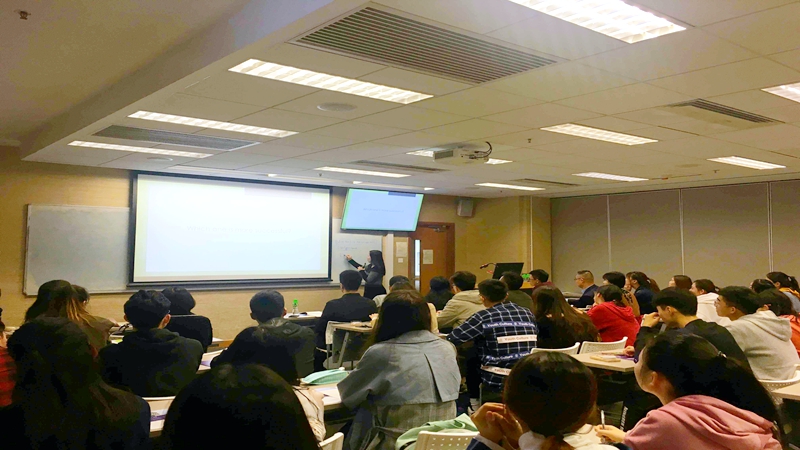
Professor Ervi Liusman is delivering a lecture
À Hong Kong University
Hong Kong University is often regarded as one of the most prestigious universities in Asia, and is dubbed as the "Ivy" of Asia. It boasts remarkable scientific research strength in areas including economics, finance, accounting and biomedicine, and some of programs it offers are AACSB and EQUIS accredited.
During the academic visit to Hong Kong University, the delegation listened to speeches on the topic "Building industry and BIM application in Hong Kong" at the Department of Real Estate and Construction of the HKU Faculty of Architecture in the Knowles Building of HKU. Specifically, Professor Li Ningyan delivered a speech titled the "Land and housing market in Hong Kong" to the delegation, in which he went through the living conditions of Hong Kong residents and the history of housing price in Hong Kong; Professor Lyu Weisheng delivered a speech titled “A Tour of the Construction Industry in Hong Kong”, in which he analyzed the landform and architectural form in Hong Kong. After that, Zhang Xibei, a student from CQU, delivered a speech titled "Old residential community reconstruction and upgrading project in Chongqing and who should fund it", in which Zhang explained the current situation and dilemma of old residential community reconstruction in Chongqing and put forward possible solutions, and expressed the wish to learn from the successful experience of Hong Kong. The last speech, titled "Demystifying BIM", was delivered by Dr. Xue Fan, a research assistant professor, in which Dr. Xue re-organized the concept of BIM, and expressed his belief in AI as the future of BIM. After the speeches, the students discussed enthusiastically with the lecturers over questions such as smart city, transfer of house sites and "nail house", and practice of old residential community reconstruction in Hong Kong.
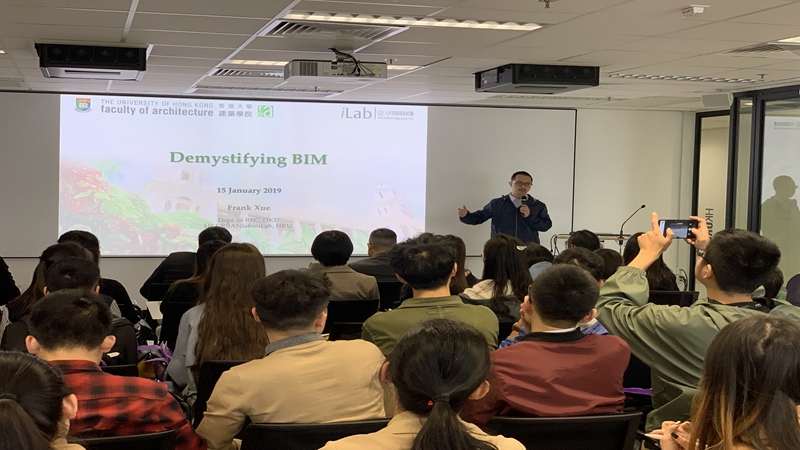
Dr. Xue Fan is delivering a speech titled "Demystifying BIM"
À Hong Kong Polytechnic University
Hong Kong Polytechnic University is located in Hung Hom, Kowloon, and its Business School is AACSB, EQUIS and AMBA accredited. This University boasts extraordinary strengths in research areas including civil and structural engineering and building environment.
During the visit to Hong Kong Polytechnic University, the delegation visited the Department of Building and Real Estate (BRE) located at Block Z and were met with warm reception. Professor Chen Bingquan, head of the Department, and Professor Xu Zhiwen and Dr. Chen Weiming, deputy heads of the Department, introduced the delegation to the School of Construction and Environment and the Department of Building and Real Estate of Hong Kong Polytechnic University from different aspects. Professor Chen Bingquan gave a view of the current and future research areas of the Department of Building and Real Estate, including reconstruction of old urban areas/development of new towns, infrastructure development, railway development, building health and safety; Dr. Chen Weiming, the deputy head of the Department in charge of teaching, introduced to the delegation degree awarding, undergraduate course recognition, and overseas exchange of students of the Department; Ji Tingting, a graduate of the School of Management Science and Real Estate of Chongqing University, shared her personal experience in living and studying at Hong Kong Polytechnic University as a student there. After that, staff of the University showed us around the campus. Students were greatly impressed by the architectural form with uniform red brick facade, which looked grand and magnificent.
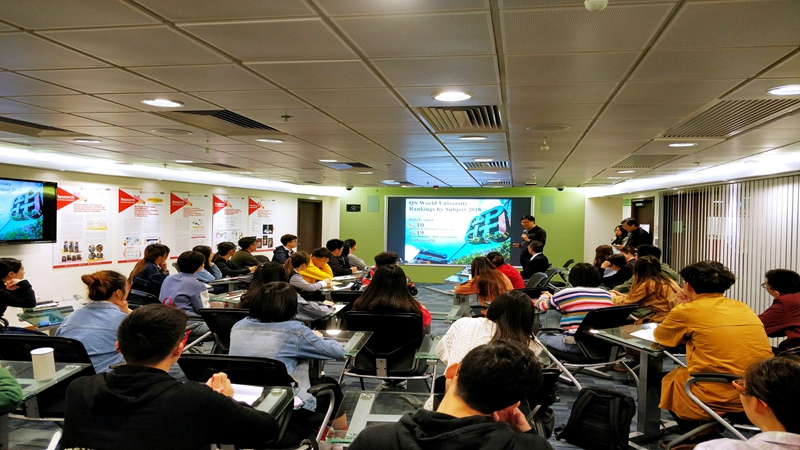
An introduction to Hong Kong Polytechnic University
À City University of Hong Kong
During the visit to the City University of Hong Kong, Professor Zhang Xiaoling from the Department of Public Policy delivered an academic speech titled "Urbanization-What is the approach to inclusive and sustainable urbanization?Space, dimension and governance" to the delegation. In her speech, Professor Zhang analyzed the causes and influences of urbanization from a number of basic problems of urbanization. After that, Professor Zhang made comparative analysis of the development speed of urbanization in China, and showed her worry about the excessive development of the built environment and its non-sustainability. Then, Professor Zhang analyzed the dimensions of urbanization and pointed out that the movement of capital, knowledge and people resulting from the overwhelming trend of globalization and temporal and spatial compression resulting from scientific and technological advancement would pose significant impact on urbanization. According to Professor Zhang, this would further lead to centralization and decentralization in spaces of the city, or formation of big cities and medium and small towns. The empirical results indicated that counter urbanization was an inevitable trend. In view of the current development situation of cities in China, the distribution system of cities in China was approaching the Zipf's law. After that, Professor Zhang analyzed the spatiality of urbanization, and pointed out that one of the important characteristics was its relevance, and that the connected effect between different parts of the space was of great significance to sustainable urban development. As for governance of urbanization, Professor Zhang held that we should take into account the economic, social, institutional, ecological, technical and other aspects, and draw on specific methods such as big data processing and data fusion to quantify sustainable urbanization, through three-dimensional and all-round approaches. In the Q&A part, students had discussion with Professor Zhang over issues such as resources and environment carrying capacity in sustainable construction and counter urbanization process. Professor Zhang praised the students for their enthusiasm and answered their questions with patients.
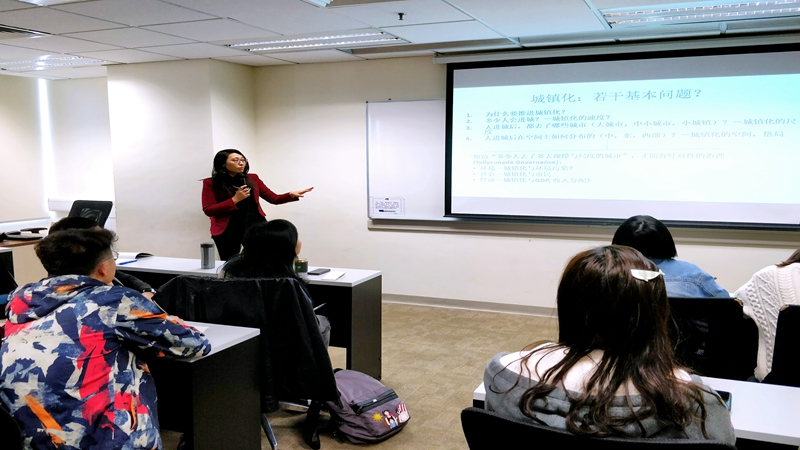
Associate Professor Zhang Xiaoling is discussing urbanization related issues with students
II. Students paid field visit to project sites and gained a deep understanding of practical application of knowledge.
During the academic visit, the delegation visited Zero Carbon Building, and CSCL projects in Hong Kong, such as One KaiTak, Marina South, Hong Kong-Zhuhai-Macao Bridge, MGM COTAI Macau, Nova Grand, and Zhuhai Hengqin Project. Students visited the houses on sale and construction sites and gained an intuitive understanding of the projects and their ability to apply what was learnt to practice was improved.
À Zero Carbon Building
Zero Carbon Building is located in Kowloon Bay, Hong Kong. It is a project jointly undertaken by the Construction Industry Council and the Government of the Hong Kong Special Administrative Region, and is the first zero carbon building that operates all year around and consumes only renewable energy. It is mainly benefited by: 1. High green coverage, with a 2,000 square meter urban primeval forest + artificial wetland; 2. Environment-friendly pavement and enclosure materials: environment-friendly floor tiles + grass + stone cage fence; 3. Two systems that convert waste into energy: Biodiesel triple system + solar panel system. Moreover, the Zero Carbon Building also serves as an exhibition hall of smart city and sustainable building environment. During the visit and interaction, students gained deeper insights into the application of evaluation tools of environment of green buildings and BIM throughout the service life of a building, and the application of puma manipulator, RFID and VR.
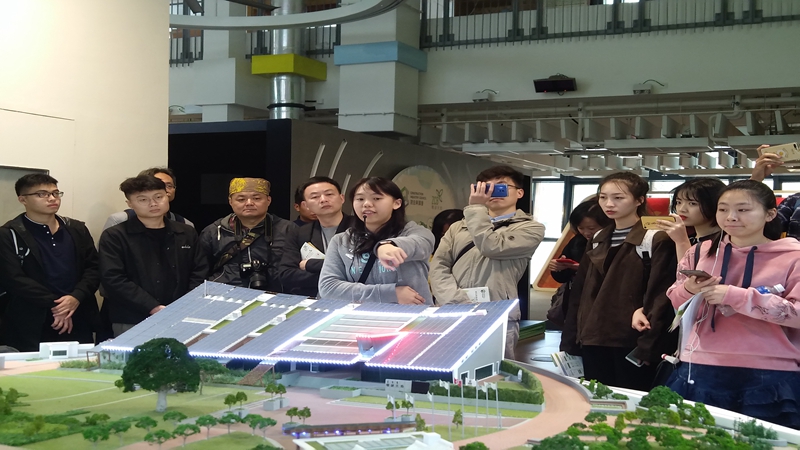
An introduction to Zero Carbon Building
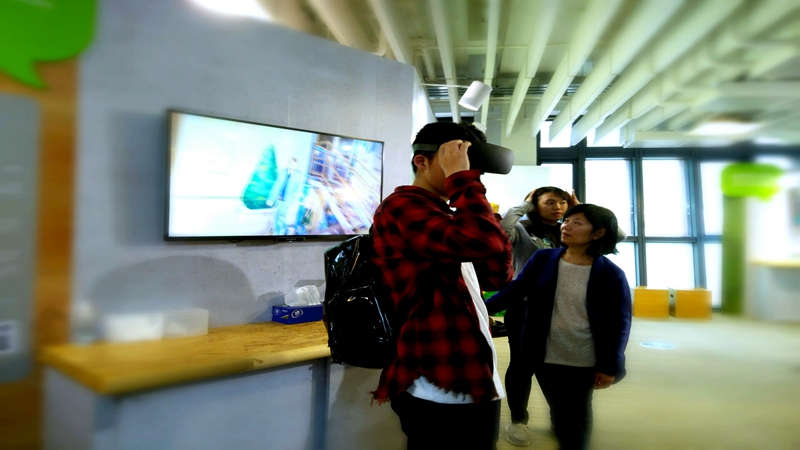
Student are experiencing AR
À CSCL projects in Hong Kong: One KaiTak and Marina South
The delegation visited two premises of CSCL in Hong Kong, One KaiTak and Marina South, both of which are luxury real estate developments. One KaiTak is located at Muk Ning Street, Kowloon City District, Hong Kong, and the unit price is between 160,000 yuan and 200,000 yuan/square meter. Marina South is located at Ap Lei Chau, South Peninsula, Hong Kong and has a unit price as high as 220,000 yuan/square meter.
After that Project Manager Mr. Wang Songyan delivered a speech titled "Hong Kong Project Management" to the delegation. In his speech, Mr. Wang gave a view of the development of CSCL, land supply in Hong Kong, main developers in Hong Kong, sources of investment projects in Hong Kong, loan ratio of real estate project development in Hong Kong, development process, pre-sale of uncompleted flats, stamp duty, and mode of agent distribution in the following 4 aspects : 1. An introduction of CSCL; 2. An overview of the real estate market of Hong Kong; 3. Investment, development and sales of residential developments; 4. Main real estate projects in Hong Kong and Macau. This experiences proved to be helpful for students to gain a deeper understanding of the real estate market in Hong Kong.
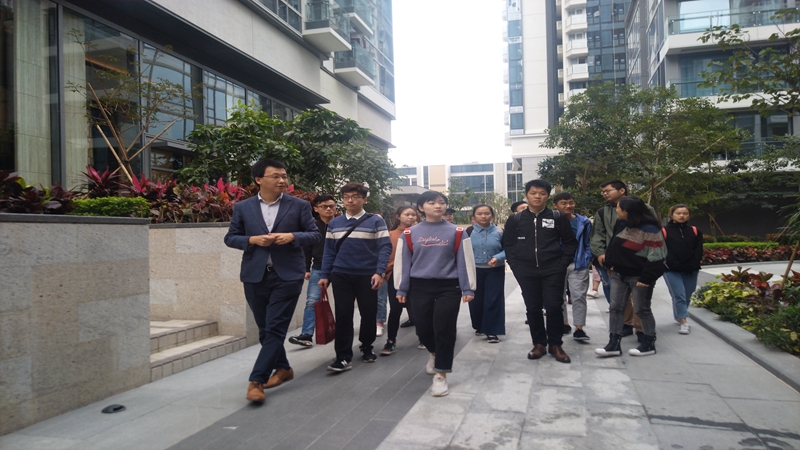
Students are visiting a project
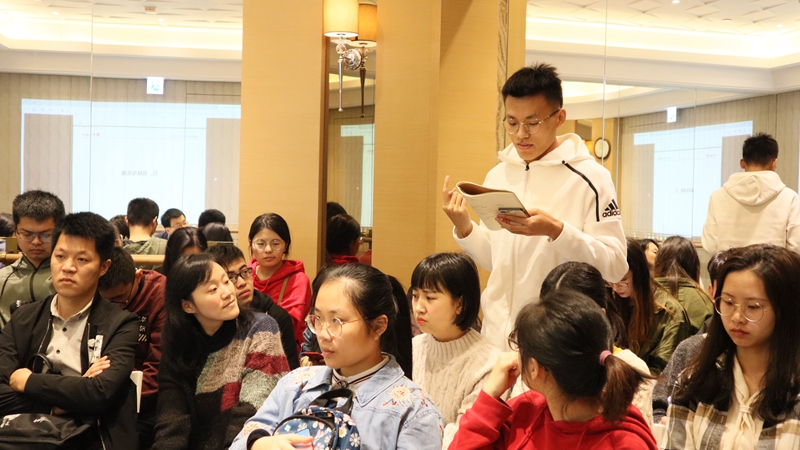
Q&A session
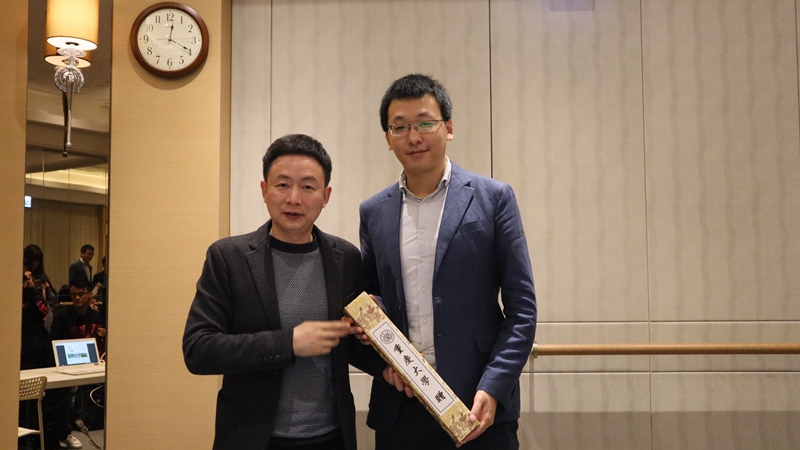
The representative of the School is presenting gifts
À Hong Kong-Zhuhai-Macao Bridge
Hong Kong-Zhuhai-Macao Bridge is the world longest cross-sea bridge. It starts from the man-made island nearby Hong Kong International Airport on the east, and extends towards the west through the Lingdingyang Estuary and a man-made island in Macau, to Hongwan, Zhuhai. The total length of the Bridge is 55 km, and that of the main bridge is 29.6 km. The distance from Hong Kong Port to Zhuhai-Macau Port is 41.6 km. The bi-directional six-lane expressway on the bridge has a designed speed of 100 km/h. The total investment in the Project is 126.9 billion yuan.
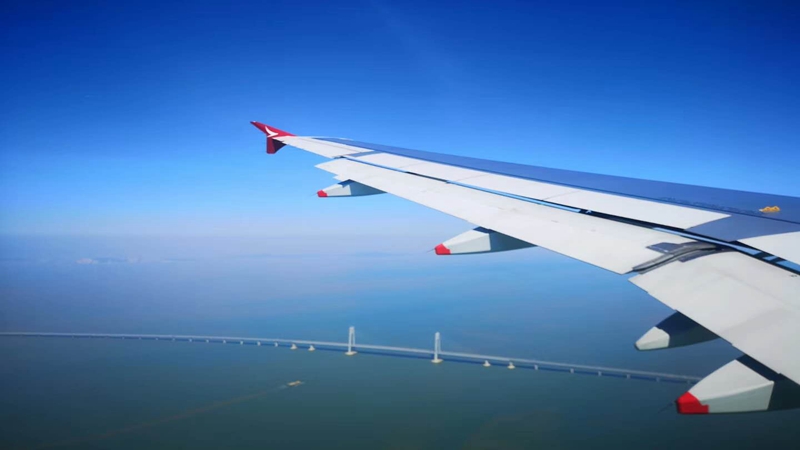
An aerial view of Hong Kong-Zhuhai-Macao Bridge
The dedicated buses of Hong Kong-Zhuhai-Macao Bridge have license plates of Hong Kong, Macau and mainland China, and USB ports are provided at different parts of the buses which feature user-friendly design and high energy utilization. The traffic rules of mainland China apply to the main bridge section, which means the vehicles must keep to the right, Looking into the distance from the middle of the Lingdingyang Estuary, the students found that the buildings were like a mirage, and were filled with admiration. About half an hour later, the students arrived in Macau before they got tired of the view of the Ningdingyang Estuary,
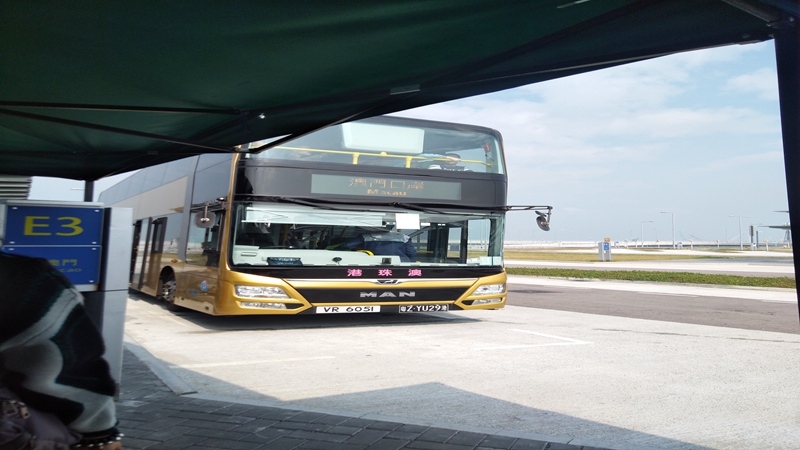
A shuttle bus with 3 license plates running on Hong Kong-Zhuhai-Macao Bridge

USB port
À MGM COTAI Macau
Macau is home to the largest gambling house in the world, and its revenue from the gaming industry exceeded that of Las Vegas in 2013. At present, more than 80% of the fiscal revenue of the Macau government came from the gaming industry. By 2006, the number of gambling houses in Macau reached 6, one of which is MGM COTAI Macau. Mr. Chen Zhe, Project Manager of MGM Grand Macau, gave the delegation a warm reception, and explained the characteristics and difficulties during construction of the Project to the students, who learned a lot.
According to Chen Zhe, the construction cost of MGM Grand Macau was 16 billion yuan, and the floorage is 420,000 square meters. It was built jointly by China State Construction Engineering Corporation Macau and China State Construction Engineering Corporation Hong Kong utilizing local human resources and advanced construction technologies from Hong Kong. Structural design and onsite management were the most difficult part of the Project.
The number of onsite workers during peak period topped 6,800, which made management very hard; the skylight costed 600 million HKD; the one-piece glass curtain wall weighs 1.8 tons. In order to give a visual impact, the skylight has no brace by design, and is supported by welded joist steel. Due to frequent strikes of typhoon in Macau, the skylight designed to withstand force-15 wind, which means great design and process difficulties. This entire Project was completed by Chinese people and Chinese enterprises, a demonstration of the world-leading manufacturing level of China.
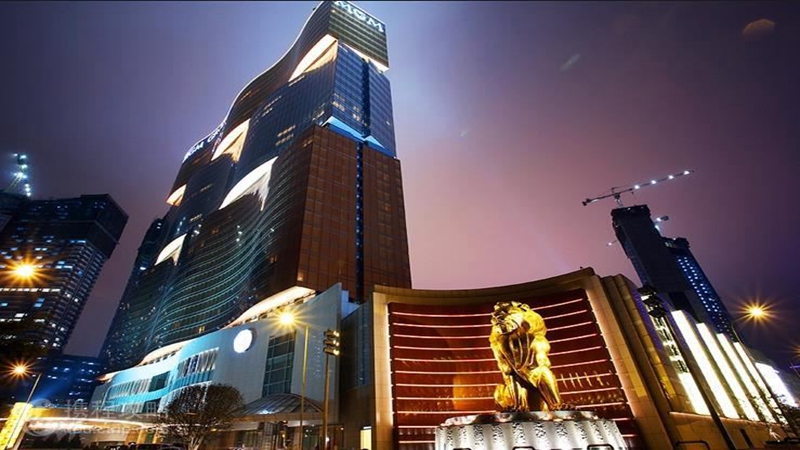
Night view of MGM Grand Hotel

Chen Zhe is explaining difficulties in construction to students in details.
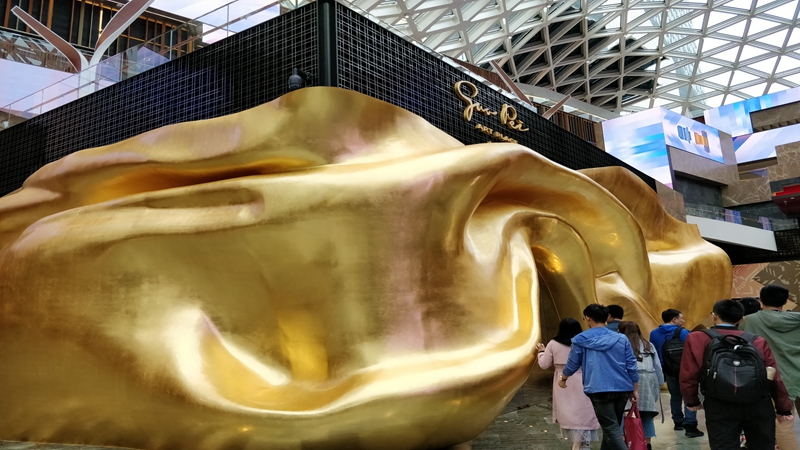
A clothing shop with the the Belt and Road Initiative design
À Nova Grand
The total market value of Nova Grand is more than 30 billion Hong Kong dollars. The delegation visited the sample house of Nova Grand, and had a discussion in the meeting room of Nova Grand. Through the discussion, students learned from the construction management experience of Nova Grand and gained an understanding of the real estate market of Macau. China Construction Engineering (Macau) Company Limited was founded in 1981, and has a market share between 15% and 20% in the large-scale project segment of construction market in Macau. One in every 8 Macanese live in buildings built by China Construction Engineering (Macau) Company Limited, which is enjoying an incredibly good reputation in Macau.
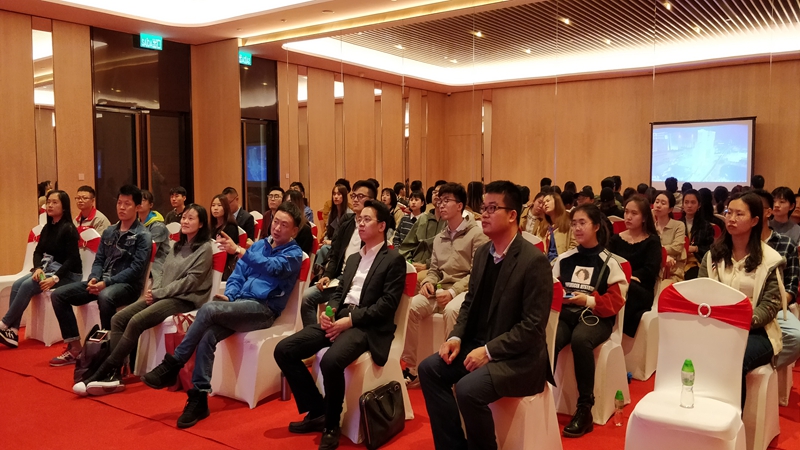
Students are watching the publicity film of Nova Grand
According to Mr. He Liwen, project manager, Macau has a land area of 32.8 square km and a total population of 656,000. There are very few new plots. As a result, any house that was built less than 10 years ago is a first-hand house. The average turnover of houses is 3,500 a year, and the number of new houses supplied each year is no more than 3,000. There is a supply-demand imbalance.
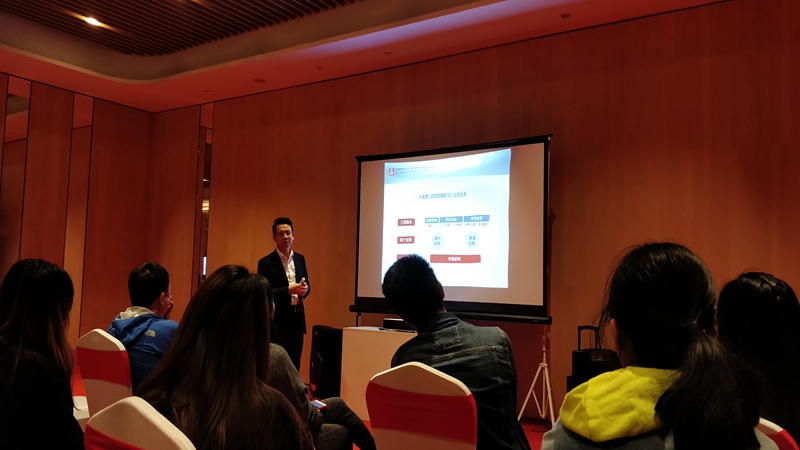
An introduction is given to the real estate market in Macau
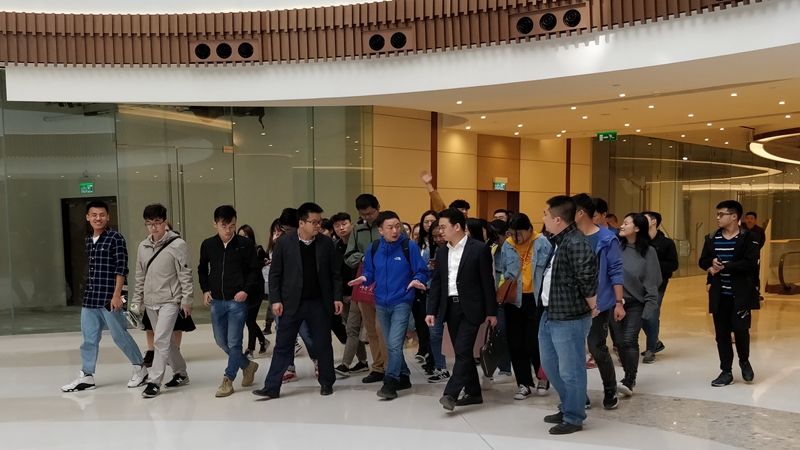
Students are inside the Nova Grand Project
À Zhuhai Hengqin Project
Hengqin is located in the biggest island in Zhuhai, Hengqin Island, right at the intersection of "one country, two systems" and the junction of "internal and external radiation", and is close to Hong Kong and Macau. It is positioned to serve Macau. Advanced approaches were adopted for development and construction planning of Hengqin. At the beginning, it took 3 years to build the underground infrastructure, followed by above ground comprehensive development. The main line of underground utility tunnel with a length of 33.4 km has been built. The underground space integrates features like commerce, car parking and civil air defense and has a total floorage of 12 million square meters, forming a diversified organic 3D city with the aboveground buildings with an area of 45 million square meters.
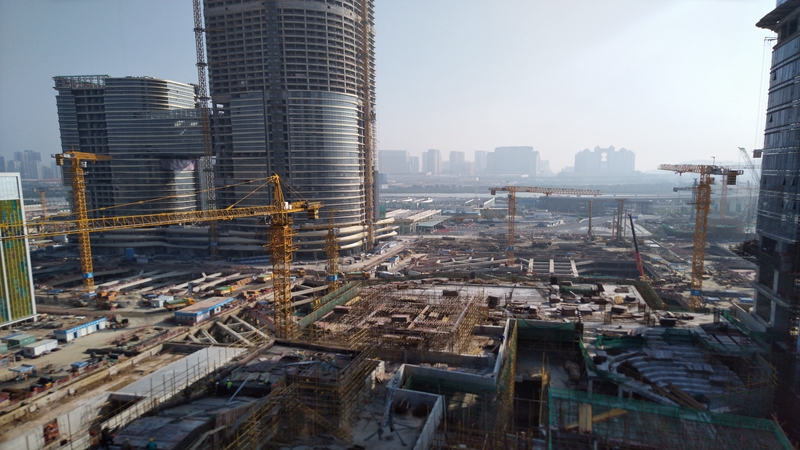
Large-scale construction site in Hengqin
On the morning of January 22, the visiting delegation visited the construction site at Plot A03 of China State Construction Engineering Corporation. The students gained a deep understanding of the future development direction, management difficulties of construction site, characteristics and similarities and differences between projects in mainland China and in Macao by participating in discussion and listening to interpretation. China State Construction Engineering Corporation has been attaching great importance to construction safety. They do not only offer safety training, but also provide safety training measures such as bungee jumping experience and electric shock experience.
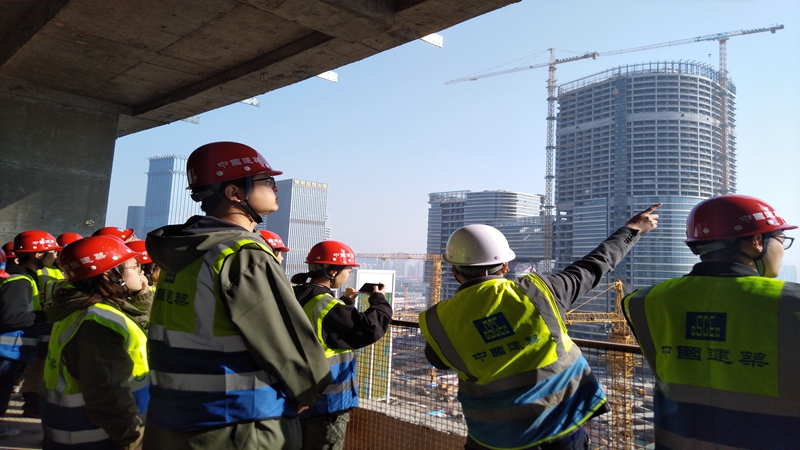
Interpretation of the construction site
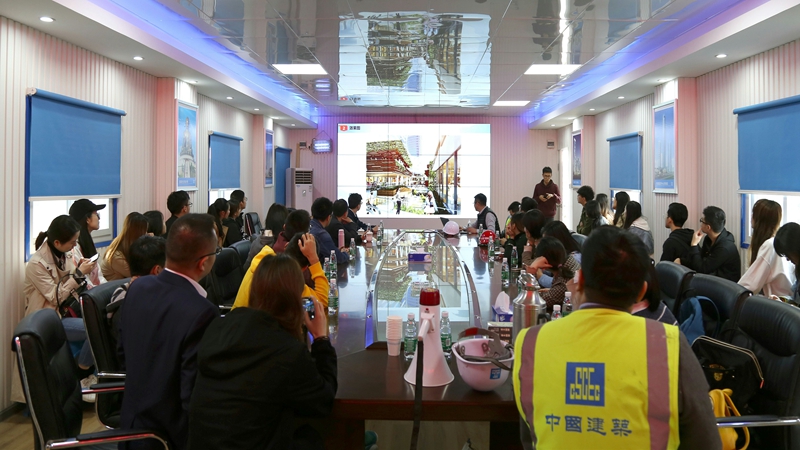
Students are learning in the meeting room
After lunch, the visiting delegation visited Hengqin Planning Library, where they learned about the positioning and construction characteristics of Hengqin; Hengqin Financial World, where they learned about the planning and positioning of the third tallest building in Hengqin with a height of 300m; the model of old plant reconstruction-"Lopburi" commercial housing, where advanced drainage ditch design was adopted for the square. The open-air stage there can be raised or lowered and will be crowded with people on the New Year's Eve.
III. Students experienced a different culture and their innovation thoughts were enhanced.
As part of the academic visit, in order to promote all-round development of students, broaden students' horizon, cultivate their innovation awareness of applying high and new technology to the building industry, and allow them to learn from the experience of Hong Kong in urban planning and development and urban governance, gain insights into the history, culture and geography of Hong Kong, and improve their humanistic quality, arrangement was made for visit to SenseTime, City Gallery, Victoria Peak, Tai Kwun, Federation of Hong Kong Industries and Cheung Chau Island.
À SenseTime
Hong Kong Headquarters of SenseTime is located in Hong Kong Science Park, Sha Tin. It is an AI unicorn specialized in research and application of computer vision and deep learning technology, has its own deep learning platform called senseparrots, and is the 5th national open and innovative platform of first-generation AI.
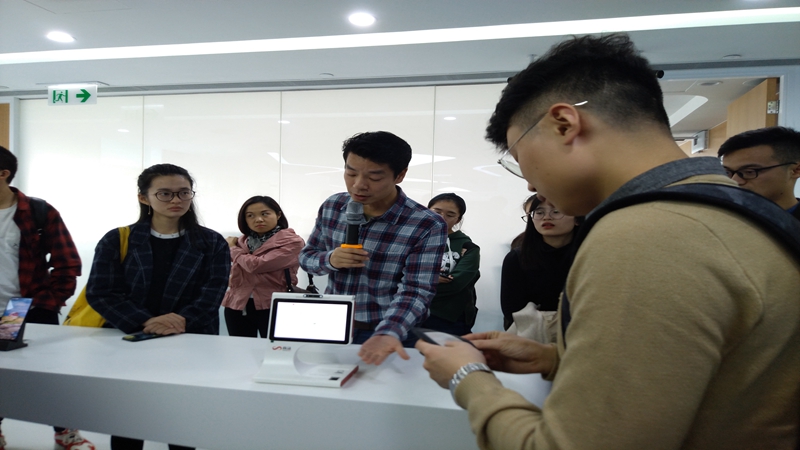
Students are trying the identification technology.
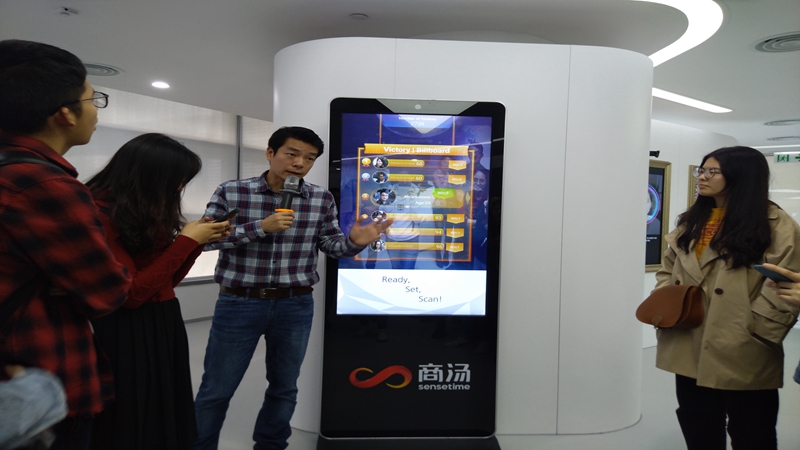
Students are trying the "face scoring machine"
Through the visit, lecture and interaction, students gained a deep understanding of how AI is going to change and influence the future society and the building industry, and tried some technological products, such as identification, image and video technology (beauty, animation and etc.), simulation of unmanned driving, face recognition, remote sensing. After the lecture, Mr. Luo Yinghua (assistant director of sales) exchanged with the teachers and students over topics including the possibility and prospect of the application of high and new technologies such as artificial intelligence in the construction industry, and the ethical conflict that artificial intelligence may bring. The exchange of different views went on in an intense yet harmonic atmosphere.
À City Gallery and Victoria Peak
City Gallery is located in Central of Hong Kong, and is the first gallery in Hong Kong devoted to planning and infrastructure development managed by the Planning Department. Students watched a feature movie about the Gallery and learned about the development history and future planning of Hong Kong. During the visit, the students gained an understanding of cultural relics protection, living environment, sustainable development, strategic infrastructure, and land development in Hong Kong, a well as the urban development planning of the city. After that, the delegation visited the Victoria Peak, where they enjoyed the beautiful natural landscape of Hong Kong, and gain an understanding of protection measures for mountain torrents and debris flows in places frequently stricken by typhoon.
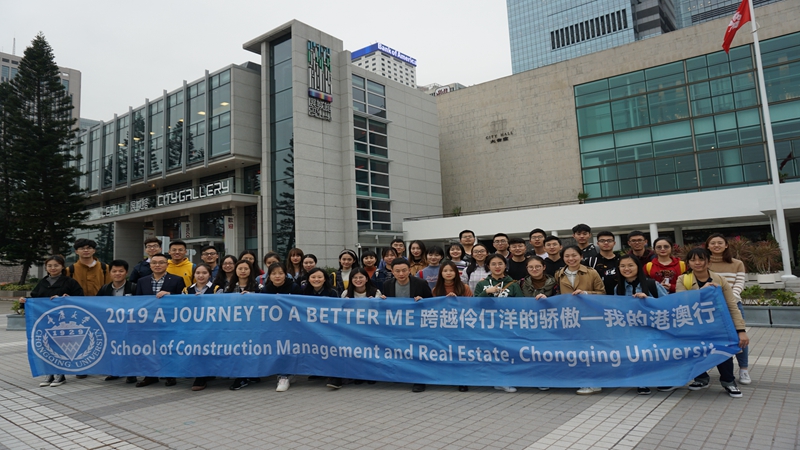
A group picture taken outside the City Gallery
À Tai Kwun
Tai Kwun is a famous cultural museum of Hong Kong located half way up the Victoria Peak. Tai Kwun is the most important revitalization program of historic sites, and comprises the former Central Police Station, Central Magistracy and Victoria Prison Compound. This program aims to give the historic site complex a new lease on life through exhibition of cultural relics and artistic activities. Students gained great insights into the unique history of Hong Kong with traces of colony during the free visit.
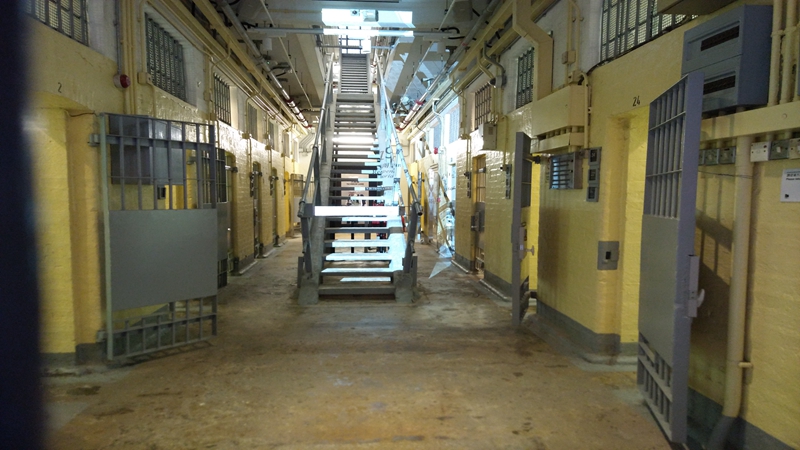
Interior of Tai Kwun
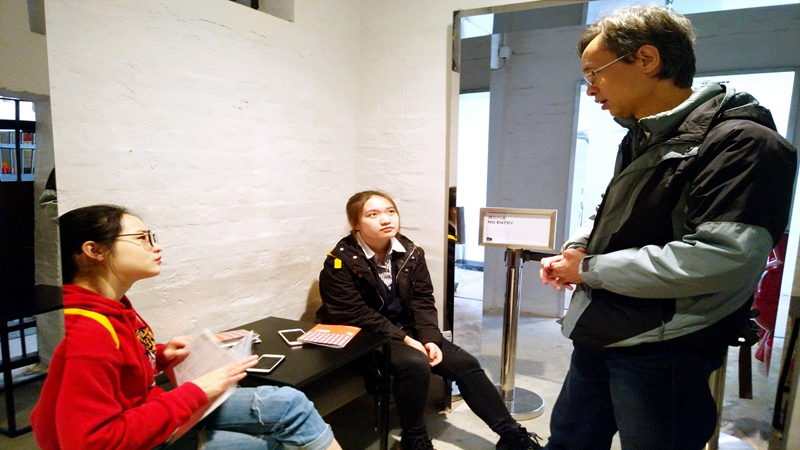
The guide is explaining the history of Tai Kwun
À Federation of Hong Kong Industries
The Federation of Hong Kong Industries is located at Cheung Yue Street, Cheung Sha Wan, Kowloon. During the visit, students listened to two lectures titled respectively the "underground pipe network facilities in Hong Kong" and "construction of Hong Kong-Zhuhai-Macao Bridge", which were mainly about the practice of storm drain in west Hong Kong, and the originality of the section of Hong Kong-Zhuhai-Macao Bridge in Hong Kong. During the break of two lectures, students had a close look at various famous products of food industry in Hong Kong outside the meeting room.

An introduction to the underground pipe network facility in Hong Kong and Hong Kong-Zhuhai-Macao Bridge
À Cheung Chau Island
Cheung Chau Island is some 10 km from Hong Kong Island, and is one of the 200 offshore islands of Hong Kong. It has an area of about 2.46 square km and a population of some 30,000. Before thriving of Hong Kong Island and Kowloon, Cheung Chau Island was once a busy fishing port and a harbor of trading ships. Despite the relocation of the trading center to Hong Kong Island and Kowloon, Cheung Chau Island still serves as a fishing port, where you can see the original appearance of the fishing village in Hong Kong.
It takes about 50 minutes to get to Cheung Chau Island by ferryboat. Students were allowed free time on the island, during which they could climb mountains, put out to sea or find something to eat. You can find the best views on the Island at Kwun Yam Beach and Tung Wan Beach. Tasty food you can find on the island include deep-fried glutinous rice cake, fish balls, red bean paste cookie and shark fin.
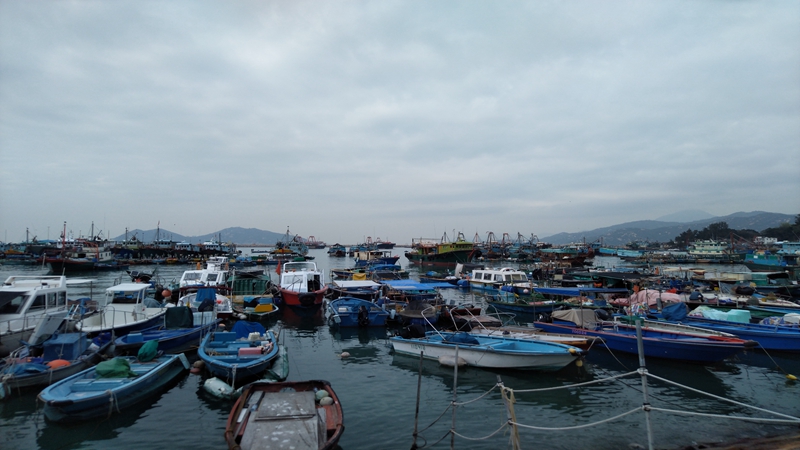
Cheung Chau Island Fishing Village
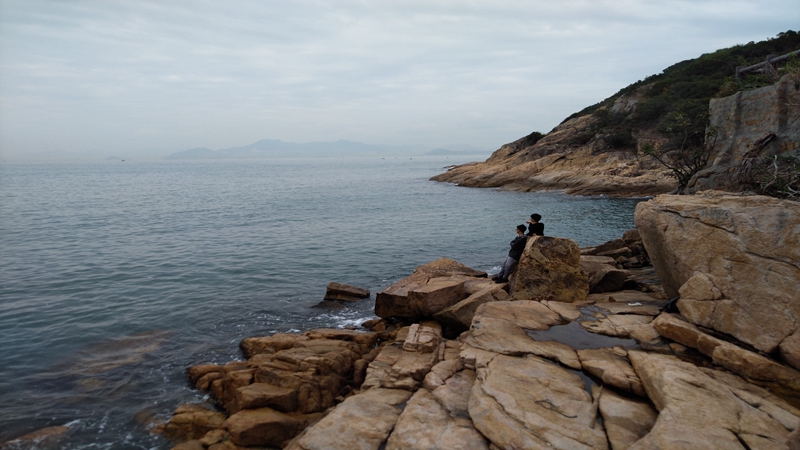
Sea view at Kwun Yam Beach
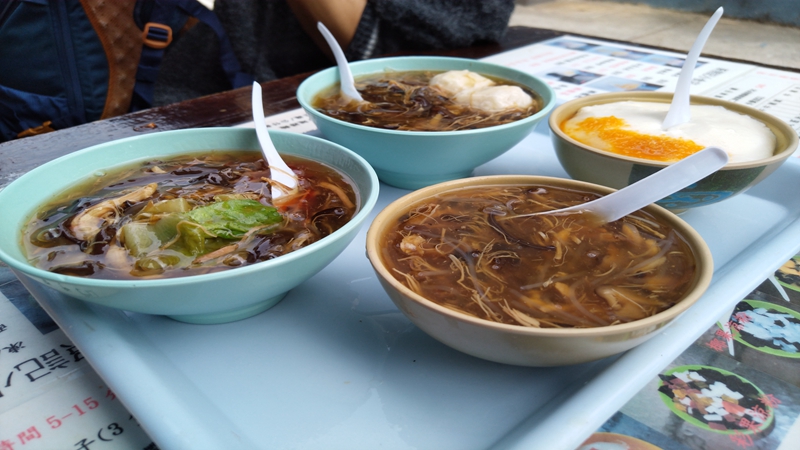
Tasty food on Cheung Chau Island
IV. Students had an unforgettable experience during this academic visit.
The students learned and felt a lot during the 10-day academic visit to Hong Kong, Macau and Zhuhai, and found they were lots of things to learn and study. For example, the importance attached to and pursuit of efficiency in a fast-paced city; the establishment of and compliance with rules in a city with good traffic order; the importance attached to and practice of environment friendly and sustainable development as reflected in construction of the "Zero Carbon Building".
Furthermore, students found many details with characteristics of Hong Kong and Macau. For example, the land resource in Hong Kong and Macau is in short supply. “An inch of land values an inch of gold”. Therefore agriculture there is quite undeveloped, and there is a heavy reliance on import, which drives up the price. The price of cooked rice is 12 yuan/bowl, and you can hardly see any vegetable there. For another example, in order to protect local workers and prevent various social issues resulting from mass unemployment of workers, the government of Hong Kong and Macau enacted a law to require scaffolds used for construction to be made of bamboo, which, in fact, is a backward process and is unnecessarily friendly to environment. Moreover, due to land resource shortage in Macau and Hong Kong, it is hard for car drivers to find a parking place. As a result, the parking rate is shockingly high and multi-floor aboveground garages are becoming increasingly popular.
After the academic visit, many students said that the experience was unforgettable and that they learned a lot from it. Some feedbacks of students are given below:
Luo Siyu: Looking back upon the academic visit, what impressed me the most was the buildings of different random color combinations. Every day in Hong Kong, I was filled with amazement when I saw the low-saturation color matching that was pleasant to my eyes.
Yue Hongzhe: The lecturers, to ensure everyone understood what they said, used both Chinese and English when introducing the commercial layout, and real estate overview of Hong Kong and their application in Hong Kong. We learned a lot of things that we cannot learn back here.
Generally speaking, the 10-day "Pride of Crossing Lingdingyang Estuary---My Trip to Hong Kong and Macau" academic visit proved to be a great success as was expected. During the academic visit, the students broadened their research horizon, improved their engineering practical ability, and promoted their humanistic quality.
In the future, with support of the University and the Faculty of Architecture, the School of Management Science and Real Estate will continue its efforts on expanding exchange channels, carry out international activities, and launch similar academic visit programs that are student development-oriented. The School will provide satisfactory services and encourage students to go abroad to broaden their international horizon, learn from advanced experienced from other countries and achieve self-improvement.